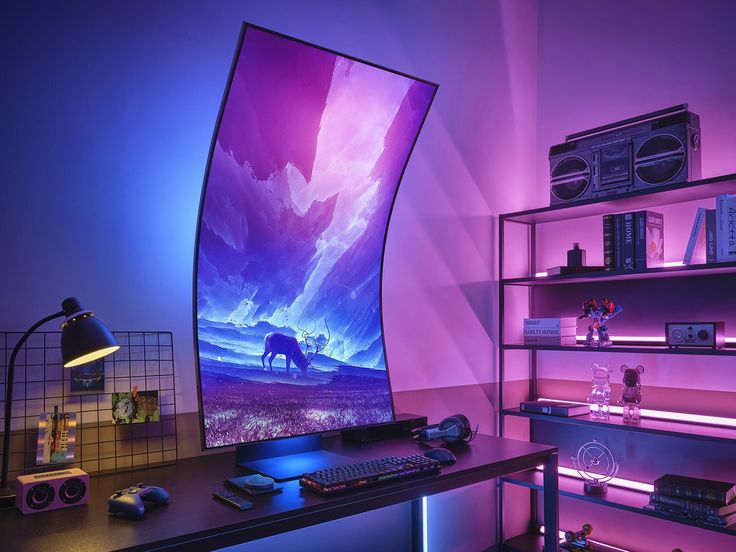When it comes to gaming, the monitor you choose can make a world of difference. With advancements in technology, gamers now have two primary options: curved and flat monitors. Both styles have their advocates and unique benefits. So, which one is right for you? Let’s dive into the details to help you make an informed decision gaming monitor.

Understanding the Basics
Flat Monitors
Flat monitors have been the standard for years. Their design allows for a straightforward viewing experience, making them versatile for various uses, from gaming to professional work. Here are some characteristics:
- Familiarity: Most gamers are accustomed to flat screens, making them easier to transition to.
- Cost-Effective: Generally, flat monitors are more budget-friendly, offering great performance without breaking the bank.
- Wide Availability: There’s a vast selection of flat monitors available, catering to different preferences and specifications.
Curved Monitors
Curved monitors have gained popularity in recent years, especially in the gaming community. Their design aims to create a more immersive experience. Here’s what to consider:
- Immersive Experience: The curvature of the screen helps to wrap the image around your field of vision, enhancing immersion in games.
- Reduced Distortion: Curved monitors can minimize visual distortion at the edges of the screen, providing a more uniform viewing experience.
- Aesthetic Appeal: Many gamers appreciate the sleek, modern look of curved monitors, which can enhance their gaming setup.
Pros and Cons
Flat Monitors
Pros:
- Easier for multi-monitor setups without gaps.
- Ideal for tasks that require a flat surface, like graphic design.
- Generally more affordable.
Cons:
- Can feel less immersive for certain games, especially in first-person shooters or racing games.
Curved Monitors
Pros:
- Enhanced immersion for single-player experiences.
- Better for wide-angle viewing, making them great for larger screens.
- Improved depth perception in some gaming scenarios.
Cons:
- Can be more expensive than flat monitors.
- Limited options for multi-monitor setups; bezels may disrupt the viewing experience.
- Some users may find them uncomfortable for extended use.
Which One Should You Choose?
Consider Your Gaming Style
If you primarily play fast-paced, action-packed games, a curved monitor may enhance your experience, pulling you into the action. Conversely, if you enjoy strategy games or simulations that require a wider field of view and precise movements, a flat monitor could serve you better.
Space and Setup
Consider your gaming setup. If you have limited space or plan to use multiple monitors, a flat setup may be more practical. Curved monitors can take up more space and might not fit seamlessly into a multi-monitor arrangement.
Budget
Budget is always a crucial factor. Flat monitors often provide excellent performance at a lower price point. If you’re looking for high refresh rates and resolution without the curved screen, a flat monitor can be a fantastic option.
Personal Preference
Ultimately, personal preference plays a significant role. If possible, try to test both types in a store or at a friend’s setup. Sometimes, the feel of a curved screen versus a flat one can influence your decision more than specifications.
Conclusion
Both curved and flat monitors have their strengths and weaknesses, making them suited for different types of gamers. Consider your gaming habits, space, budget, and personal preferences to determine which monitor style aligns with your needs. Whichever you choose, investing in a quality monitor is a step toward elevating your gaming experience.